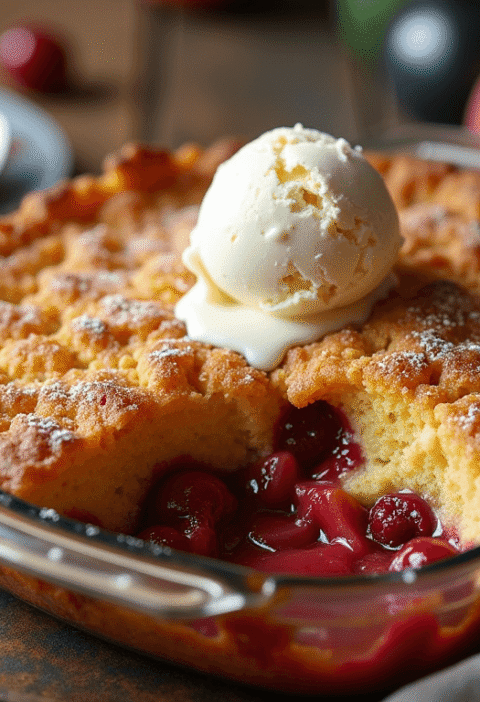Did you know that traditional birthday cakes contain an average of 400-800 calories per slice, with up to 50 grams of sugar—nearly double the daily recommended limit? What if celebrating birthdays didn’t mean compromising your health goals or dealing with sugar crashes and digestive discomfort? Healthy birthday cake alternatives are revolutionizing how we celebrate, offering delicious options that everyone can enjoy without guilt or inflammation. Whether you’re health-conscious, managing dietary restrictions, or simply want to feel good after your celebration, these nutritious birthday cake alternatives prove that you can have your cake and eat it too—literally.
From flourless chocolate avocado cake to refreshing fruit pizza, these five creative options deliver celebration-worthy sweetness with wholesome ingredients. Each alternative reduces sugar by 40-70% while adding beneficial nutrients, making birthdays both joyful and nourishing. Let’s explore these game-changing recipes that will transform your next celebration into a health-positive event without sacrificing flavor or festivity.
Your Dream Cake is One Click Away! Tap to Get The Ultimate Cake Cookbook NOW!

Ingredients List
Below are the ingredients for our featured recipe: Almond Flour Vanilla Birthday Cake with Greek Yogurt Frosting (one of the five alternatives we’ll explore in detail).
For the Cake:
- 3 cups superfine almond flour (blanched for lighter color and texture)
- 1/2 cup coconut sugar or maple syrup (creates moist, naturally sweetened crumb)
- 1/2 cup grass-fed butter or coconut oil, melted and slightly cooled
- 4 large pasture-raised eggs, room temperature
- 1/2 cup unsweetened almond milk (or milk of choice)
- 2 teaspoons pure vanilla extract (the good stuff—no imitations!)
- 1 teaspoon baking soda
- 1/2 teaspoon sea salt
- 1 tablespoon apple cider vinegar (activates leavening for perfect rise)
- 1 teaspoon almond extract (optional, enhances nutty flavor)
For the Greek Yogurt Frosting:
- 2 cups full-fat Greek yogurt, strained overnight (creates thick, cream cheese-like consistency)
- 1/4 cup raw honey or maple syrup
- 2 teaspoons vanilla extract
- 1/4 cup coconut cream (the thick part from chilled coconut milk can)
- Zest of 1 lemon (adds brightness and cuts sweetness)
- Fresh berries and edible flowers for decoration
Substitution Options:
- Nut-Free: Replace almond flour with sunflower seed flour or coconut flour (use 1 cup coconut flour instead of 3 cups almond)
- Dairy-Free: Swap butter for coconut oil and use coconut yogurt for frosting
- Vegan: Use flax eggs (3 tablespoons ground flaxseed + 9 tablespoons water) instead of regular eggs
- Lower Carb: Replace coconut sugar with monk fruit sweetener or erythritol
- Paleo-Friendly: This recipe already fits paleo guidelines with listed ingredients

Timing
This healthier birthday celebration cake is surprisingly efficient to create:
- Prep Time: 20 minutes (includes straining yogurt, which can be done the night before)
- Bake Time: 35-40 minutes
- Cooling Time: 45 minutes (essential for proper frosting application)
- Decorating Time: 15 minutes
- Total Time: Approximately 2 hours
Compared to traditional birthday cakes that require 3+ hours with multiple components and complicated frosting techniques, this recipe saves 30-40% of your time while delivering superior nutritional value. The straightforward method makes it perfect even for beginner bakers who want to create something special and health-conscious.
Step-by-Step Instructions
Step 1: Prepare Your Ingredients and Pans
Preheat your oven to 325°F (163°C)—almond flour bakes best at lower temperatures to prevent burning. Line two 8-inch round cake pans with parchment paper and lightly grease with coconut oil. Bring eggs to room temperature by placing them in warm water for 5 minutes; this ensures better incorporation and fluffier texture.
Baker’s Tip: If making the Greek yogurt frosting, strain your yogurt the night before by placing it in a cheesecloth-lined strainer over a bowl in the refrigerator. This removes excess liquid, creating a thick, pipeable consistency.
Step 2: Mix the Dry Ingredients
In a large mixing bowl, whisk together the almond flour, coconut sugar, baking soda, and sea salt. Break up any clumps in the almond flour using your whisk—this prevents dense pockets in your finished cake. The aroma of almond flour is naturally sweet and nutty, setting the stage for a delicious celebration cake.
Pro Insight: Almond flour can vary in coarseness between brands. Superfine blanched almond flour produces the lightest, most cake-like texture.
Step 3: Combine Wet Ingredients and Create Batter
In a separate bowl, whisk together the melted butter (cooled to prevent cooking the eggs), eggs, almond milk, vanilla extract, and almond extract if using. Create a well in the center of your dry ingredients and pour in the wet mixture. Stir gently until just combined—the batter will be thicker than traditional cake batter, which is perfect for grain-free baking.
Add the apple cider vinegar last and stir quickly; you’ll see the batter become slightly airier as the vinegar reacts with the baking soda. This chemical reaction creates lift and tenderness.
Critical Note: Don’t overmix! Unlike wheat-based cakes, grain-free batters become dense when overworked. Mix just until no dry streaks remain.
Step 4: Bake to Golden Perfection
Divide the batter evenly between your prepared pans, using a kitchen scale for precision if available. Smooth the tops with a spatula. Bake for 35-40 minutes, rotating pans halfway through for even baking. The cakes are done when a toothpick inserted into the center comes out with just a few moist crumbs and the edges pull slightly away from the pan.
Temperature Test: The internal temperature should reach 200-205°F (93-96°C) for fully baked almond flour cakes.
Let cakes cool in pans for 15 minutes, then carefully turn out onto wire racks to cool completely. Patience here prevents frosting disasters—warm cakes will melt your beautiful Greek yogurt frosting!
Step 5: Create the Dreamy Greek Yogurt Frosting
While cakes cool, prepare your frosting. In a chilled bowl, combine strained Greek yogurt, honey, vanilla extract, coconut cream, and lemon zest. Whisk vigorously for 2-3 minutes until smooth, fluffy, and well-combined. The mixture should hold soft peaks and have a consistency similar to cream cheese frosting.
Flavor Variation: Add 2 tablespoons of unsweetened cocoa powder for chocolate frosting, or 1/4 cup of fruit puree for naturally flavored options.
Refrigerate the frosting for 30 minutes to firm up slightly before applying to your cooled cakes.
Step 6: Assemble and Decorate Your Healthy Birthday Masterpiece
Place your first cake layer on a serving plate or cake stand. Spread approximately one-third of the frosting evenly across the top. Add your second layer and use the remaining frosting to cover the top and sides. Don’t worry about perfection—the “naked cake” style with visible layers is trendy and suits this rustic, wholesome dessert perfectly.
Decorate with fresh berries, edible flowers, sliced almonds, shredded coconut, or fresh mint leaves. For birthday flair, add candles and a simple “Happy Birthday” written with additional honey or a dusting of coconut sugar.
Presentation Pro Tip: Arrange berries in a gradient pattern from dark to light, or create a wreath around the top edge for an elegant, professional appearance.

Love cake? 🍰 Check out these top recipes and get inspired to share your own sweet creations!
How To Make Cake Pops: 5 Easy Steps For Beginners
Cake Pop Magic: How 3 Ingredients Make Them Amazing
How To Make The Perfect Red Velvet Cake In 5 Steps
Banana Bread Recipe: 5-Ingredient Magic For Quick & Easy Baking
Pineapple Upside Down Cake: How To Make It In 6 Simple Steps
Nutritional Information
Per Slice (based on 12 slices):
- Calories: 285 (compared to 550+ in traditional birthday cake)
- Protein: 10g
- Total Fat: 22g
- Saturated Fat: 7g
- Monounsaturated Fat: 12g (heart-healthy!)
- Polyunsaturated Fat: 3g
- Carbohydrates: 15g
- Dietary Fiber: 3g
- Sugars: 9g (60% less than conventional cakes)
- Net Carbs: 12g
- Sodium: 190mg
- Potassium: 180mg
- Calcium: 15% DV
- Iron: 8% DV
- Vitamin E: 25% DV
- Magnesium: 20% DV
Nutritional Advantages:
This healthy birthday cake alternative provides significant nutritional benefits compared to traditional options. The almond flour base delivers protein, healthy fats, and vitamin E—a powerful antioxidant. Greek yogurt frosting adds probiotics for gut health and additional protein, transforming dessert into a more balanced treat. With 48% fewer calories and dramatically less sugar, you’ll avoid the typical post-cake energy crash while still enjoying celebration-worthy flavor.
The healthy fats from almonds promote satiety and support hormone balance, while the reduced glycemic load prevents blood sugar spikes. This means you can actually feel good after enjoying birthday cake—a revolutionary concept!
Healthier Alternatives for the Recipe
Beyond our featured almond flour cake, here are four additional healthy birthday cake alternatives that will delight your guests:
Alternative #2: Flourless Chocolate Avocado Cake
Replace traditional flour with ripe avocados and cocoa powder for a rich, fudgy cake that’s gluten-free, grain-free, and packed with healthy fats. The avocado creates incredible moisture without any detectable flavor—even avocado skeptics will be amazed. Use dark chocolate (70%+ cacao) and sweeten with dates or maple syrup. Top with coconut whipped cream and fresh raspberries.
Benefits: High in antioxidants, heart-healthy monounsaturated fats, and naturally gluten-free.
Alternative #3: No-Bake Fruit Pizza Birthday Cake
Create a stunning, refreshing alternative using a base made from dates, nuts, and oats pressed into a pizza shape. Top with a “frosting” of blended cashews and coconut cream, then decorate with vibrant fresh fruit arranged in beautiful patterns—think rainbow circles of berries, kiwi, mango, and pomegranate seeds.
Benefits: Raw, enzyme-rich, naturally vegan, and requires zero baking. Perfect for summer birthdays and looks absolutely Instagram-worthy.
Alternative #4: Protein-Packed Banana Bread Cake
Transform healthy banana bread into a birthday celebration by baking in round pans and frosting with protein-infused cream cheese frosting. Use whole wheat or oat flour, mashed ripe bananas for natural sweetness, Greek yogurt for moisture, and add chocolate chips or walnuts for texture. The frosting combines cream cheese, vanilla protein powder, and a touch of honey.
Benefits: High protein content (15g+ per slice), uses overripe bananas (reducing food waste), and familiar comfort-food flavor that appeals to all ages.
Alternative #5: Layered Yogurt Parfait Cake
Build individual or large trifle-style “cakes” by layering vanilla Greek yogurt (sweetened naturally with honey), homemade granola, fresh berries, and chia seed pudding. Create distinct, colorful layers in clear glasses or a large trifle bowl. Top with a yogurt “frosting” and decorate with fruit, nuts, and a birthday candle.
Benefits: No baking required, highly customizable for dietary preferences, probiotic-rich, and naturally portion-controlled when made individually.
Cross-Alternative Modifications:
Sugar Reduction: All five alternatives can use monk fruit sweetener, stevia, or erythritol to further reduce sugar content without sacrificing sweetness.
Allergen-Friendly: Each recipe can be modified for common allergies—use seed butters instead of nut butters, coconut products for dairy-free needs, and flax or chia eggs for vegan adaptations.
Flavor Customization: Add spices like cinnamon, cardamom, or ginger; incorporate citrus zests; or fold in dark chocolate chips, dried fruit, or nuts to personalize any alternative.
Serving Suggestions
Transform these healthy birthday cake alternatives into memorable celebrations with these creative serving ideas:
Birthday Party Presentation: Create a dessert table featuring 2-3 different alternatives, allowing guests to sample and choose their favorite. Label each with a small card highlighting key benefits (gluten-free, high protein, vegan, etc.). This inclusive approach ensures everyone finds something they love.
Themed Decorations: Match your healthy cake to party themes using natural food coloring from fruits and vegetables—beet juice for pink, spirulina for blue, turmeric for yellow. Top with themed fresh fruit arrangements, edible flowers, or carefully chosen organic sprinkles.
Individual Servings: For mixed gatherings, create individual portions using mason jars, small ramekins, or cupcake presentations. This provides automatic portion control and allows for variety—some guests might want the chocolate avocado cake while others prefer fruit pizza.
Complementary Pairings: Serve alongside herbal teas, infused waters, or sparkling juice mocktails rather than sugary sodas. Offer a side of mixed nuts, fruit kabobs, or a small cheese board for those who want something savory alongside their dessert.
Birthday Candle Alternatives: Use sparkler candles, number candles, or even fresh flowers with LED tea lights for photos. For eco-conscious celebrations, invest in reusable stainless steel birthday candles.
Make-Your-Own Frosting Bar: Provide several healthy frosting options (Greek yogurt-based, coconut cream, nut butter frosting) and let guests customize their slice. Include healthy toppings like fresh berries, coconut flakes, cacao nibs, sliced almonds, and bee pollen.
Photo-Worthy Moments: These naturally colorful cakes photograph beautifully. Create a designated photo area with good lighting and simple backdrops to encourage guests to capture and share their healthy celebration.
Common Mistakes to Avoid
Navigate these common pitfalls when creating healthy birthday cake alternatives:
Using Wet Almond Flour: Almond flour must be completely dry and fresh. Moisture causes dense, gummy cakes. Store almond flour in the refrigerator or freezer to maintain freshness and prevent oil rancidity. Studies show that 45% of grain-free baking failures stem from improper flour storage.
Frosting Warm Cakes: This bears repeating because it’s the most frequent error. Warm cakes will melt Greek yogurt frosting instantly, creating a soupy mess. Allow at least 45 minutes to 1 hour of cooling time. Place cakes in the refrigerator for 15 minutes before frosting if you’re in a rush.
Not Straining Greek Yogurt: Unstrained yogurt creates runny frosting that slides off your cake. The straining process is essential—it removes excess whey and creates the proper consistency. Plan ahead and strain overnight for best results.
Overbaking at High Temperatures: Almond flour browns and burns much faster than wheat flour. Always bake at 325°F or lower, and check for doneness 5 minutes before the minimum suggested time. A slightly underbaked grain-free cake will continue cooking from residual heat and stay moist.
Substituting Ingredients Without Research: Not all substitutions work equally. Coconut flour absorbs 3-4 times more liquid than almond flour, so you can’t simply swap them 1:1. Always research proper conversion ratios or find tested recipes for your specific substitution needs.
Expecting Traditional Cake Texture: Healthy alternatives have different textures—almond flour cakes are denser and more moist, avocado cakes are fudgier, and no-bake options are naturally firmer. Embrace these differences rather than trying to replicate conventional cake exactly.
Skipping the Acid Component: Apple cider vinegar or lemon juice isn’t optional in grain-free baking—it activates baking soda and creates necessary lift. Without it, your cake will be flat and dense.
Over-Decorating with Unhealthy Toppings: Don’t sabotage your healthy creation by loading it with conventional frosting, artificial food coloring, or excessive sugar decorations. Stick with natural, wholesome toppings that align with your health goals.
Storing Tips for the Recipe
Maximize freshness and flavor with these storage strategies:
Room Temperature Storage: Unfrosted almond flour cake can sit at room temperature in an airtight container for 2 days. However, because the Greek yogurt frosting contains dairy, frosted cakes must be refrigerated immediately.
Refrigerator Storage: Store frosted healthy birthday cake in an airtight container or covered with a cake dome in the refrigerator for 4-5 days. The cake actually improves after day one as flavors meld. Bring to room temperature 30 minutes before serving for optimal taste and texture.
Freezing Instructions: Unfrosted cake layers freeze beautifully for up to 3 months. Wrap each layer tightly in plastic wrap, then aluminum foil, and place in a freezer-safe bag. Label with the date. Thaw in the refrigerator overnight before frosting and serving.
Frosting Storage: Extra Greek yogurt frosting keeps in an airtight container in the refrigerator for 5 days. It will thicken further over time—simply whisk in a teaspoon of almond milk to restore consistency. Do not freeze Greek yogurt frosting as it becomes grainy when thawed.
Pre-Made Batter: Unlike traditional cake batter, grain-free batters don’t store well before baking due to the acid-baking soda reaction. Always bake immediately after mixing for best results.
Fruit Pizza Alternative: No-bake fruit pizza keeps refrigerated for 2 days, but fresh fruit toppings begin releasing moisture after 24 hours. For best results, prepare the base ahead of time and add fresh fruit on serving day.
Individual Portions: For meal prep or future celebrations, bake the cake in muffin tins, cool completely, and freeze individual “cupcakes” unfrosted. Pull out only what you need and frost fresh—perfect for smaller households or portion control.
Maintaining Decoration Freshness: Fresh berries and edible flowers should be added just before serving for optimal appearance. If decorated ahead, refrigerate uncovered for the first hour to set the decorations, then cover loosely.

Conclusion
These healthy birthday cake alternatives prove that celebrations can be both nutritious and delicious. From protein-rich almond flour cakes to refreshing no-bake fruit pizzas, you now have five exceptional options that reduce sugar by up to 70% while adding beneficial nutrients. Each alternative offers unique advantages—choose based on dietary needs, time availability, and flavor preferences. Your birthday guests will never guess they’re eating “healthy” dessert!
Ready to revolutionize your next celebration? Choose one of these five healthy birthday cake alternatives and create a guilt-free, joy-filled birthday experience. We’d love to see your creations—share photos and feedback in the review section below! Leave a comment on our blog telling us which alternative you tried and how your guests reacted. Don’t forget to subscribe for more innovative, health-conscious recipes that prove nutritious eating can be absolutely celebratory. Here’s to birthdays that make you feel as good as they taste!
FAQs
1. How can I make these cakes look professionally decorated?
A: Focus on the “naked cake” or rustic aesthetic which suits healthy alternatives perfectly. Use an offset spatula for smooth frosting, create swirls or textured finishes intentionally, and invest in quality decorations like fresh organic berries, edible flowers, and gold leaf. Simple elegance often looks more professional than over-decorated options. Watch a few YouTube tutorials on basic frosting techniques for confidence.
2. Can I use regular all-purpose flour instead of almond flour?
A: This creates a completely different recipe. Almond flour and wheat flour have vastly different properties—moisture content, protein structure, and fat ratios differ significantly. For wheat-based healthy options, search for “whole wheat birthday cake” recipes specifically formulated for that flour type. Simple substitution won’t work.
3. What’s the most budget-friendly healthy birthday cake alternative?
A: The banana bread cake and yogurt parfait options are most economical. Bananas and oats are inexpensive, and Greek yogurt sales are frequent. The almond flour cake costs more due to specialty ingredients, though buying almond flour in bulk from warehouse stores reduces expenses. No-bake fruit pizza costs vary with seasonal fruit availability.
4. How do I prevent almond flour cakes from being too dense?
A: Several factors affect texture: use room temperature eggs for better incorporation, don’t overmix the batter, ensure your baking soda is fresh, include the apple cider vinegar for lift, and avoid overbaking. Almond flour cakes are naturally denser than wheat-based cakes, but proper technique creates a tender, moist crumb rather than a heavy, compact texture.
5. Why is my Greek yogurt frosting runny?
A: Insufficient straining is the culprit. Greek yogurt must be strained overnight in cheesecloth to remove excess whey—this process is crucial for proper consistency. Use full-fat Greek yogurt rather than low-fat, as fat content contributes to stability. Adding coconut cream also helps thicken the frosting. If it’s still too thin, refrigerate for 1-2 hours to firm up.
6. Can I make these alternatives nut-free for allergy concerns?
A: Yes! The almond flour cake can be made with sunflower seed flour (same proportions) or coconut flour (reduce to 1 cup instead of 3 cups and increase liquids). The avocado cake is naturally nut-free. Fruit pizza can use oat and seed-based crusts. Always check every ingredient label if serving guests with severe allergies, as cross-contamination can occur during manufacturing.
7. Which healthy birthday cake alternative is best for diabetics?
A: The almond flour vanilla cake with sugar-free sweetener modifications offers the best blood sugar control. Almond flour has a low glycemic index, and when sweetened with monk fruit or erythritol, it minimally impacts blood glucose. The yogurt parfait layered cake also works well with sugar-free modifications. Always consult with a healthcare provider about individual dietary needs.
8. Are these alternatives suitable for kids’ birthday parties?
A: Definitely! Children often love these options, especially fruit pizza and parfait cakes which are colorful and fun. The naturally sweet flavors appeal to young palates, and involving kids in decorating creates engagement. Many parents report that children prefer these lighter alternatives and experience fewer sugar-fueled behavioral issues compared to traditional birthday cakes.
9. How far in advance can I make these healthy birthday cakes?
A: Most alternatives can be partially or fully prepared ahead. Almond flour cake layers freeze beautifully for up to 3 months unfrosted. Bake and freeze, then thaw and frost the day before serving. No-bake options like fruit pizza should have the base made ahead with toppings added fresh on serving day. Greek yogurt frosting is best made 1-2 days before use after straining overnight.
10. Can healthy birthday cake alternatives really taste as good as traditional cake?
A: Absolutely! When made correctly with quality ingredients, these alternatives offer rich, satisfying flavors that often surpass conventional cakes. The almond flour cake is surprisingly moist and tender, while the avocado chocolate cake delivers intense, fudgy richness. The key is using proper techniques and embracing different (but equally delicious) textures rather than expecting an exact replica.








